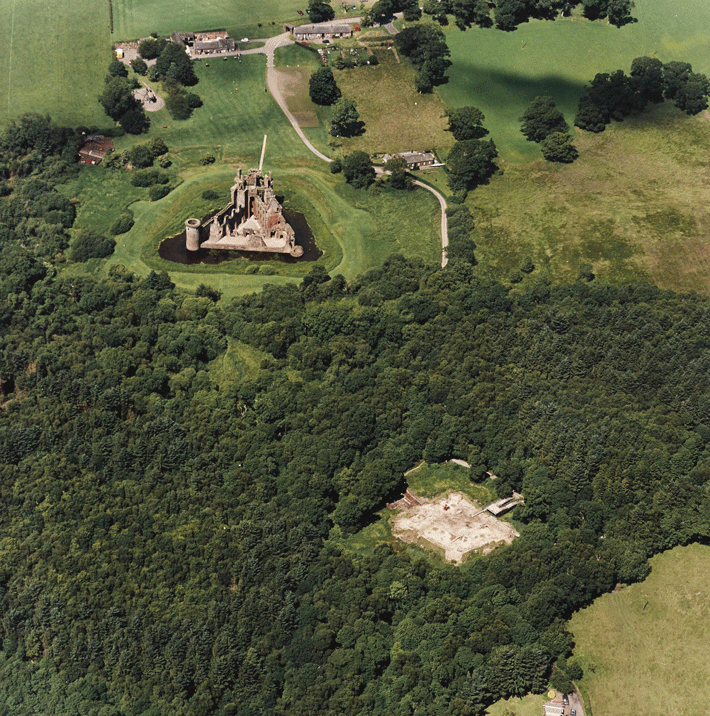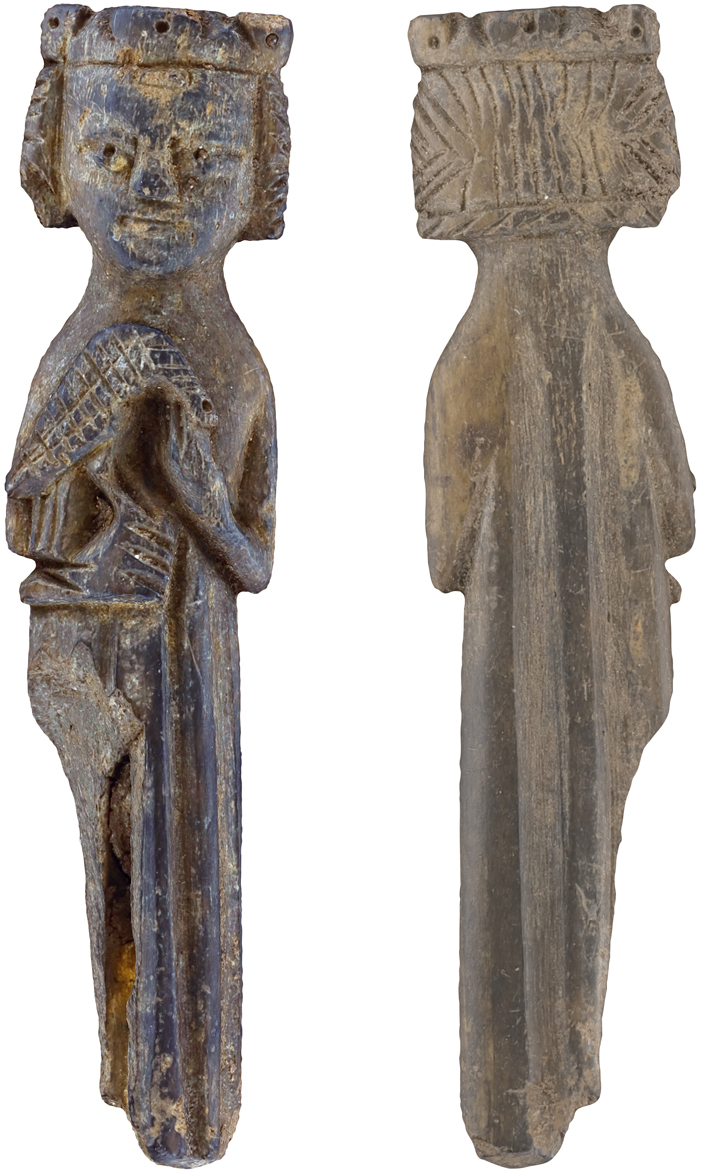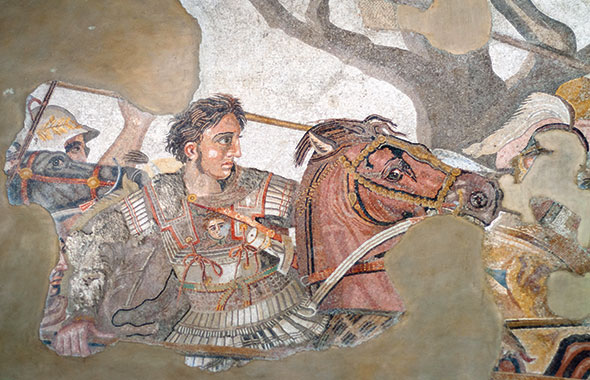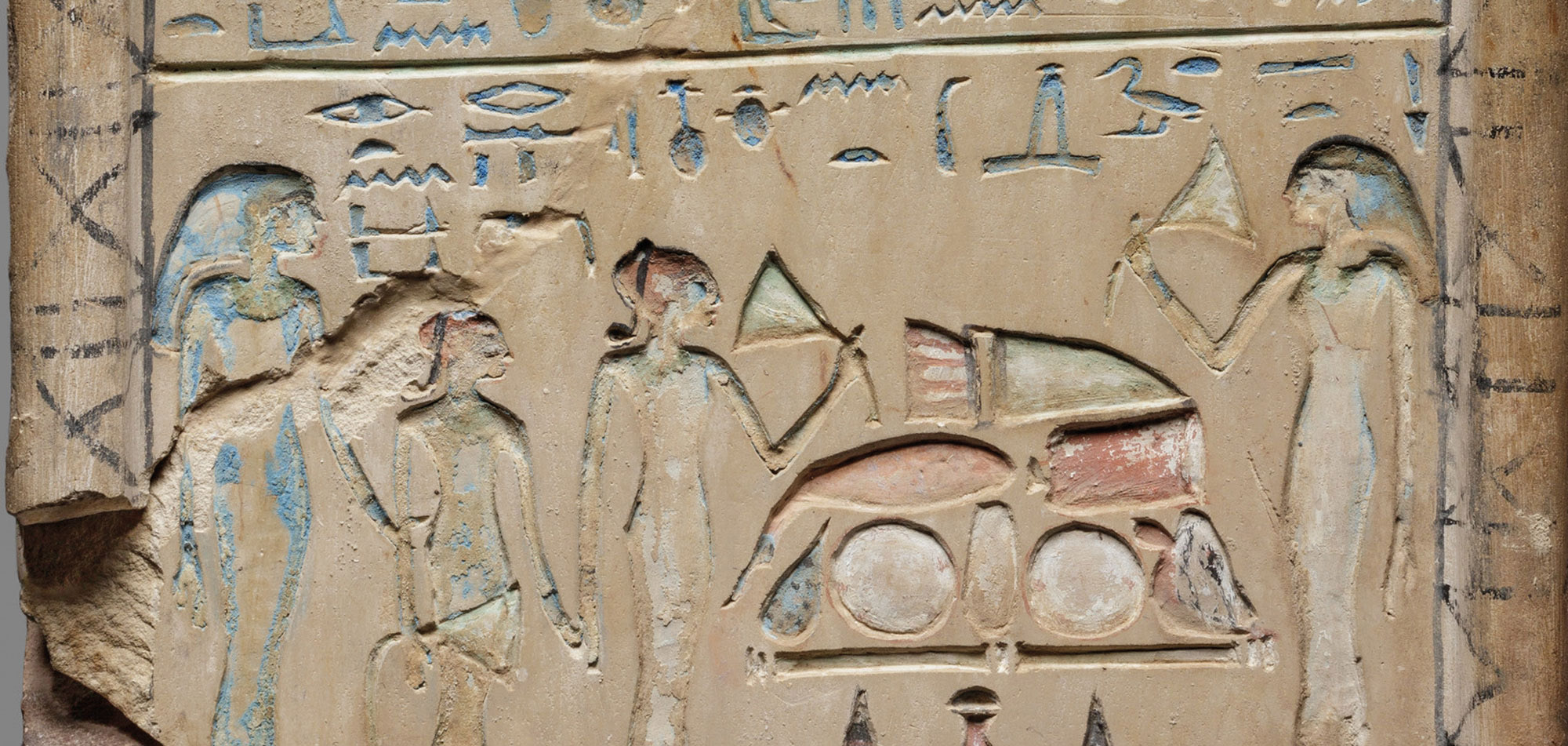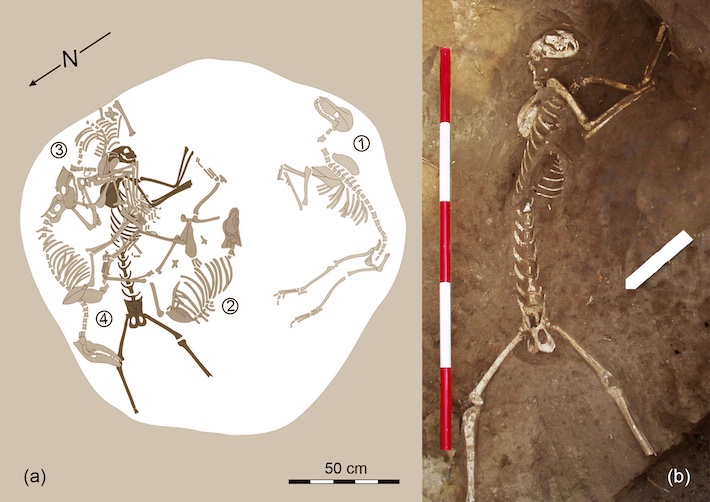
STOCKHOLM, SWEDEN—According to a Live Science report, researchers have studied the intact skeletons of a lynx and four dogs that were discovered in a beehive-shaped pit in west-central Hungary, in an area where buildings, pits, wells, and ovens have been found. The small settlement site, known as Zamárdi-Kútvölgyi-dűlő, has been dated to the fifth or sixth century A.D. The male lynx (Lynx lynx) had been placed in an extended position at the bottom of the nearly five-foot-deep pit. The two female and two male dogs were then deposited in the pit one at a time on their right sides, and covered with eight to 16 inches of soil. “It is hard to summarize our interpretation of the lynx/dogs burial as no parallels (archaeological or ethnographic) are known,” said Lászlo Bartosiewicz of Stockholm University. He, Erika Gál of Hungary's Institute of Archaeology, and their colleagues suggest that the dogs may have been killed by the cornered lynx, noting that if the burial had had ritual significance, the placement of the animals in the pit is likely to have been completed with more care. “Unfortunately, the Migration Period population of a former Roman province may have represented almost any ideology given the chaotic history of the period,” Bartosiewicz added. Read the original scholarly article about this research in International Journal of Osteoarchaeology. For more on Hungarian archaeology, go to "Letter From Hungary: The Search for the Sultan's Tomb."



